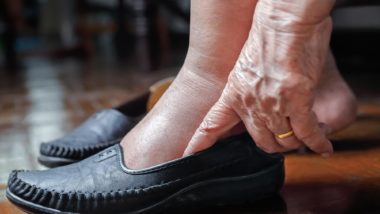Top Class Actions’s website and social media posts use affiliate links. If you make a purchase using such links, we may receive a commission, but it will not result in any additional charges to you. Please review our Affiliate Link Disclosure for more information.
Some bacterial infections can cause serious damage to tissue. More commonly known as a “flesh-eating bacteria,” some group A strep bacteria can cause a condition known as necrotizing fasciitis. This condition is also known as Fournier’s gangrene and has been the subject of diabetes medication lawsuits.
The disease is named for 19th Century scientist Jean Alfred Fournier, a specialist in sexually-transmitted diseases who mistakenly identified it as a venereal disorder. However, cases of necrotizing fasciitis have been recorded since ancient times; King Herod the Great, his grandson Herod Agrippa and the Roman emperor Galerius are all believed to have suffered from the disease. Oddly, studies indicate that Fournier’s Gangrene is more common in advanced Western nations than in the developing world.
When these bacteria enter the skin through a cut or opening, they can cause tissue damage and death. Commonly, these bacteria enter the skin through cuts, burns, scrapes, insect bites, surgical wounds, and puncture wounds. The Centers for Disease Control explains that the flesh-eating disease can also develop when someone has not suffered an open wound, but has suffered blunt force trauma. The infection may also be caused by an abscess or a skin piercing. The infection eats through the connecting tissue that holds the skin and muscles together. Although it often destroys the skin, the infection usually does not go deep enough to seriously damage the muscles.
What Are the Symptoms of Necrotizing Fasciitis?
WebMD notes that Fournier’s gangrene can first appear as redness, tenderness, and swelling of the genitals or the area around them, including the area from the genitals back to the rectum. Although Fournier’s gangrene starts in the genital region, the condition may also travel to the thighs, stomach, and chest if it is not treated promptly. Reportedly, the symptoms of necrotizing fasciitis can be accompanied by a fever or a feeling of being unwell in general. Other symptoms of necrotizing fasciitis may include a rapid heartbeat caused by the body attempting to fight off the infection, or a foul smell coming from the tissues that have already been destroyed.
These symptoms of necrotizing fasciitis may not seem severe at first, but they can worsen quickly. Health Day notes that necrotizing fasciitis requires medical attention.
How Is Necrotizing Fasciitis Treated?
The most common treatment for Fournier’s gangrene is debridement, or the cleaning of the infected tissue and removal of the areas of dead skin. If the infection is severe enough, surgery may be required to remove the infected areas. Unfortunately, these surgeries can be disfiguring.
Removal of the infected areas may result in scarring and other visual evidence. In some cases, skin grafts or other plastic surgery treatments may be needed in order to repair the areas of flesh destroyed by the infection. Other treatments may include antibiotics given intravenously in order to prevent the infection from spreading further.
Because anaerobic bacteria is a contributing factor in the disease, hyperbaric oxygen therapy in which the patient is placed in a high-oxygen environment at greater ambient pressure may be used. This can be effective in stopping the spread of the infection and killing off the bacteria.
Happily, the condition can be managed much better and these occurrences can be avoided the condition is identified and treated early. This can prevent the necessity of such surgeries. The condition is particularly dangerous specifically because the initial symptoms of Fournier’s gangrene may seem innocuous. However, if action is not taken quickly, the condition may worsen and become even fatal.
The Center for Disease Control states that “accurate diagnosis, rapid antibiotic treatment, and prompt surgery” are key to stopping a necrotizing fasciitis infection once it starts. The CDC also advises patients to see a doctor immediately if they develop a fever, nausea, or dizziness after surgery, as an infection may have developed in the wounds created by surgery.
 What Are the Risks for Necrotizing Fasciitis?
What Are the Risks for Necrotizing Fasciitis?
Normally, Fournier’s gangrene is extremely rare, affecting one out of 62,500 males annually; men, particularly older than 50, are 40 times more likely to suffer from the condition than women. Less than 2,000 reported cases of the infection since the 1950s. Those who are most likely to contract necrotizing fasciitis suffer from poorly-controlled diabetes, alcoholism, or a compromised immune system. This was confirmed in 2006 by a research team in Istanbul, Turkey, who found that 46 percent of victims had high glucose levels, while 33 percent were alcoholics. Another ten percent had suppressed immune function due to steroid use or cancer (including chemotherapy).
Can Drugs Cause Necrotizing Fasciitis?
In August, the FDA warned that diabetes drugs involving dapagliflozin may be linked to necrotizing fasciitis. These drugs are part of a class of drugs known as SGLT2 inhibitors.
Drugs made from dapagliflozin include Xigduo XR and Farxiga. They help people with Type-2 diabetes to manage their condition by helping to lower blood sugar. The drugs cause excess blood sugar to be expelled in the urine.
Because dapagliflozin drugs cause excess blood sugar to be expelled in the urine, and having too much sugar in and around the genitals can reportedly increase a patient’s risk of infection. Some of the infections can be common, like yeast infections and urinary tract infections. However, some of these infections are more serious, like necrotizing fasciitis.
The FDA notes that necrotizing fasciitis is rare in connection with use of drugs like Xigduo XR and Farxiga. Reportedly, 12 cases of Fournier’s gangrene have been identified in people taking dapagliflozin between March 2012 and May 2013. In contrast, the FDA has only identified 12 cases of Fournier’s gangrene in people taking other diabetes drugs over thirty years of collected data.
Are There Alternatives to SGLT2 Inhibitors?
Metformin (Glucophage), relatively innocuous medications derived from the French lilac plant (an old folk remedy for what was once known as the “sweetwater sickness”) is the first-line treatment for type-2 diabetes, along with exercise and changes in diet. This medication inhibits glucose production in the liver.
Other alternatives include dipeptidyl peptidase 4 (DDP-4) inhibitors (Onglyza, Januvia) and sulfonyureas (Amaryl, DiaBeta).
Join a Free Diabetes Medications & Flesh-Eating Infection Lawsuit Investigation
The type-2 diabetes medications linked to the flesh-eating infection include:
- Invokana
- Invokamet/Invokamet XR
- Farxiga
- Xigduo XR
- Qtern
- Jardiance
- Glyxambi
- Synjardy/Synjardy XR
- Steglato
- Segluromet
- Steglujan
If you or a loved one took one of the type-2 diabetes medications listed above and suffered from a flesh-eating genital infection, you may qualify to join this diabetes medication lawsuit investigation. Fill out the FREE form on this page for more information.
ATTORNEY ADVERTISING
Top Class Actions is a Proud Member of the American Bar Association
LEGAL INFORMATION IS NOT LEGAL ADVICE
Top Class Actions Legal Statement
©2008 – 2024 Top Class Actions® LLC
Various Trademarks held by their respective owners
This website is not intended for viewing or usage by European Union citizens.
Get Help – It’s Free
Join a Free Diabetes Medications & Flesh-Eating Infection Lawsuit Investigation
If you qualify, an attorney will contact you to discuss the details of your potential case at no charge to you.
PLEASE NOTE: If you want to participate in this investigation, it is imperative that you reply to the law firm if they call or email you. Failing to do so may result in you not getting signed up as a client or getting you dropped as a client.
E-mail any problems with this form to:
Questions@TopClassActions.com.
Oops! We could not locate your form.


 What Are the Risks for Necrotizing Fasciitis?
What Are the Risks for Necrotizing Fasciitis?










